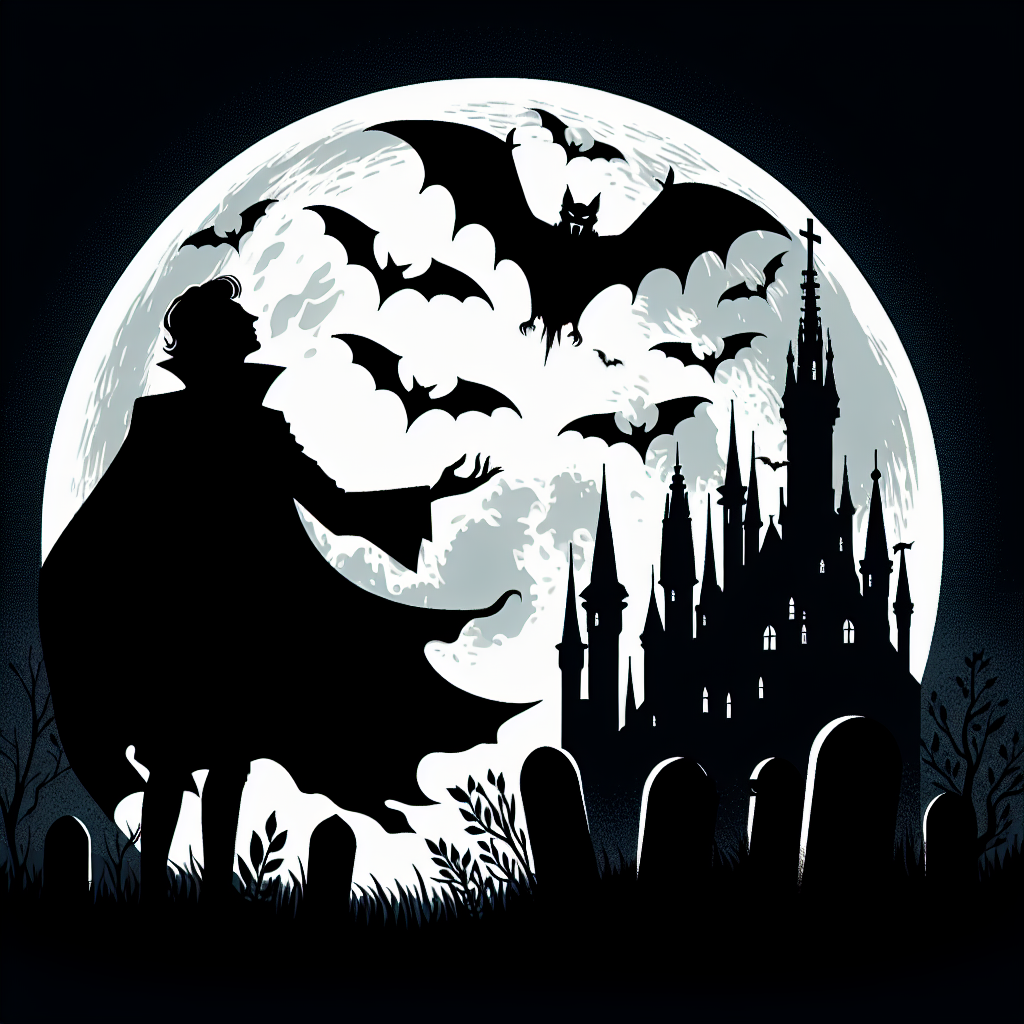The Dark Allure: Understanding Vampire Symbolism and Appeal in Modern Literature
From the shadowy corners of ancient folklore to the bestseller lists of today, vampires have maintained an unshakeable grip on our collective imagination. These immortal beings—neither fully alive nor completely dead—represent far more than simple monsters in the night. They embody our deepest desires, darkest fears, and most complex emotions about love, power, and mortality.
The Enduring Appeal of Vampire Characters
Charisma That Transcends Death
What makes vampire characters so irresistible to readers? The answer lies in their carefully crafted personas that blend danger with sophistication. Vampires are typically portrayed as devastatingly charming, worldly, and seductive—qualities that make them magnetic protagonists and antagonists alike. Their supernatural charisma serves as both their greatest weapon and their most alluring trait.
This magnetic appeal stems from their eternal sophistication. Having lived for centuries or millennia, vampires possess knowledge, culture, and refinement that mortal characters cannot match. They've witnessed history unfold, mastered arts long forgotten, and developed an otherworldly perspective that adds depth to their personalities.
The Intoxication of Forbidden Love
Perhaps no theme in vampire literature is more compelling than forbidden romance. The relationship between vampire and human represents the ultimate taboo—love that defies nature itself. This dynamic creates an irresistible tension that drives countless narratives, from classic Gothic novels to contemporary paranormal romance.
The danger inherent in these relationships amplifies every emotion. A simple touch becomes electric, a kiss potentially deadly, and love itself becomes an act of rebellion against the natural order. Readers are drawn to this intensity, experiencing vicarious thrills through characters who risk everything for love.
Power and Immortal Beauty
Vampires embody humanity's deepest fantasies about power and eternal youth. Their supernatural strength, speed, and abilities like mesmerism represent the ultimate power fantasy. Meanwhile, their immortal beauty speaks to our universal fear of aging and death.
Consider works like Alex Fox's Born Regal, where protagonist Anya discovers she's actually a Vampire Queen. This revelation transforms her from an ordinary person into someone wielding incredible power—a transformation that resonates with readers' own desires for significance and strength.
Ancient Roots: The Evolution of Vampire Mythology
Mesopotamian Origins
The vampire's literary lineage traces back thousands of years to ancient civilizations. In Mesopotamian mythology, creatures called "Ekimmu" or "Edimmu" were restless spirits seeking vengeance on the living. While not vampires in the modern sense, these entities established key themes: the return from death, the thirst for life force, and the violation of natural order.
Greek Influences
Ancient Greek mythology contributed creatures like the Empusa and Lamia—female demons who seduced and consumed their victims. These figures introduced the connection between vampirism and sexuality that remains central to the mythology today. The Lamia, in particular, established the archetype of the beautiful female predator who feeds on life itself.
Eastern Perspectives
Chinese folklore offers the Jiangshi—"hopping vampires" that drain life force from the living. These reanimated corpses, with their distinctive stiff-bodied movement, represent a different cultural interpretation of the undead that emphasizes the physical corruption of death rather than seductive beauty.
Archetypal Vampire Characteristics
The Predatory Paradox
Modern vampire characters embody fascinating contradictions. They are simultaneously predator and protector, monster and lover. This duality creates complex personalities that resist simple categorization.
Their predatory nature manifests in:
- Hunting instincts that drive their survival
- Manipulative abilities honed over centuries
- Strategic thinking that comes from immortal experience
Yet these same characters often display:
- Deep capacity for love and loyalty
- Protective instincts toward chosen companions
- Moral struggles with their nature
Isolation and Worldliness
The vampire's immortal perspective creates both wisdom and profound loneliness. They possess knowledge accumulated over centuries, making them sophisticated and worldly. However, this same immortality isolates them from mortal concerns and relationships.
This isolation often drives vampire characters to seek connection, making their relationships with mortals—or other immortals—incredibly intense and meaningful. The loneliness of eternity becomes a driving force for character development and plot progression.
Supernatural Conflicts
Contemporary vampire literature often features conflicts with other supernatural beings, particularly werewolves. Series like Nicole Ridley's Gideon Series showcase these ancient rivalries, where vampire sirens threaten the established order maintained by lycan royalty. These conflicts add layers of political intrigue and territorial warfare to vampire narratives.
Symbolic Language of Vampire Literature
Blood: The Ultimate Symbol
Blood represents the most potent symbol in vampire literature, encompassing multiple meanings:
- Life force and vitality
- Intimate connection between vampire and victim
- Power exchange and dominance
- Transformation and rebirth
The act of blood-drinking becomes a complex ritual that can represent everything from violation to communion, depending on the context and consent involved.
Darkness and Light
The vampire's relationship with darkness and light creates rich symbolic opportunities:
Darkness represents:
- Mystery and hidden knowledge
- Forbidden desires and secret worlds
- Safety and comfort for the undead
- The unconscious mind and repressed emotions
Light symbolizes:
- Danger and potential destruction
- Truth and revelation
- The mortal world vampires have lost
- Purification and redemption
Religious Iconography
Crosses, holy water, and sacred objects in vampire literature represent:
- The power of faith and belief
- Protection from evil influences
- The conflict between sacred and profane
- Moral boundaries and spiritual warfare
Mirrors and Reflections
The traditional absence of vampire reflections symbolizes:
- Loss of humanity and soul
- Separation from mortal identity
- Hidden true nature
- Inability for self-reflection or growth
The Transformative Bite
The vampire bite carries multiple symbolic meanings:
- Initiation into a new existence
- Intimate bonding between individuals
- Loss of innocence and transformation
- Exchange of power and vulnerability
The Moon's Influence
While more commonly associated with werewolves, lunar symbolism in vampire literature represents:
- Cyclical transformation and change
- Primal urges and instinctual behavior
- Connection to ancient magic and power
- The passage of immortal time
Modern Evolution and Continuing Appeal
Today's vampire literature continues to evolve, exploring themes of:
- Identity and belonging in supernatural communities
- Moral complexity in immortal existence
- Power dynamics in supernatural relationships
- Integration between human and supernatural worlds
Series like Sapir Englard's The Millennium Wolves demonstrate how vampire characters can serve as both allies and antagonists, with complex motivations that challenge traditional good-versus-evil narratives.
Conclusion: The Immortal Appeal
Vampire characters endure in literature because they represent fundamental human experiences amplified to supernatural extremes. They embody our desires for power, beauty, and eternal life while confronting our fears of death, isolation, and moral corruption.
Through vampires, authors explore the complexity of human nature, the price of power, and the meaning of love in ways that purely human characters cannot. They serve as dark mirrors reflecting our own desires and fears, making them eternally relevant to readers seeking to understand the depths of human experience.
Whether portrayed as romantic heroes, terrifying villains, or complex anti-heroes, vampires continue to offer writers and readers a rich symbolic language for exploring the most profound questions of existence, morality, and desire. In their immortal darkness, we find illumination of our own mortal condition.
💝 Ready to Explore More Romance?
If you enjoyed this article about Vampire writing, discover thousands of captivating love stories on our platform.
Download App







